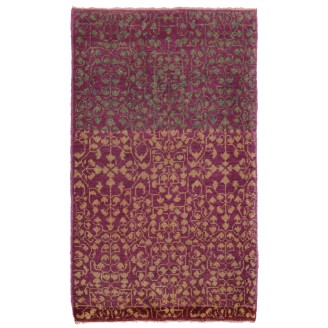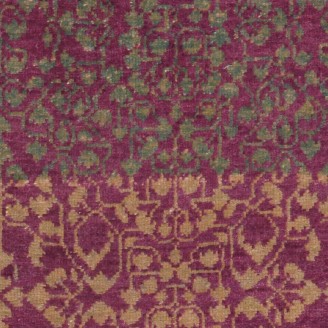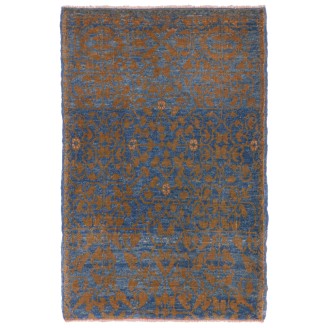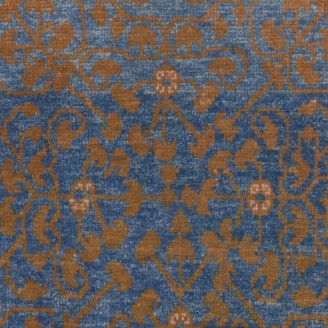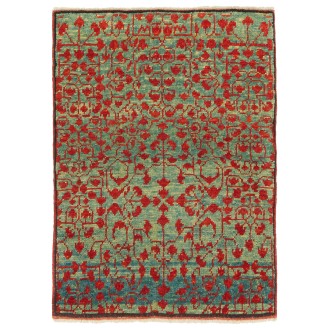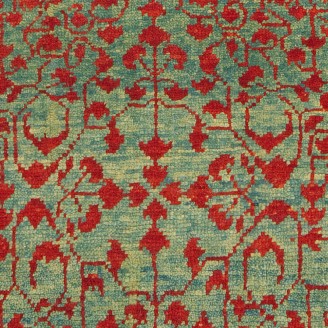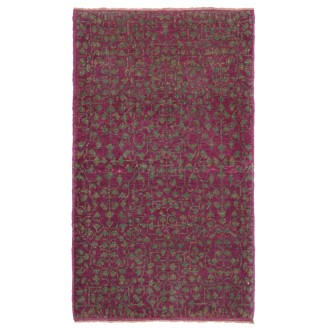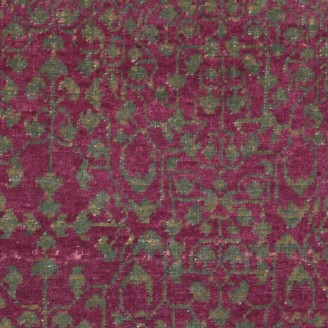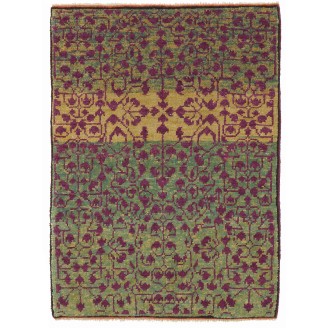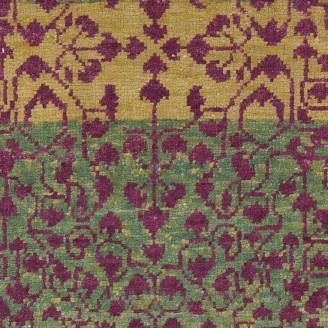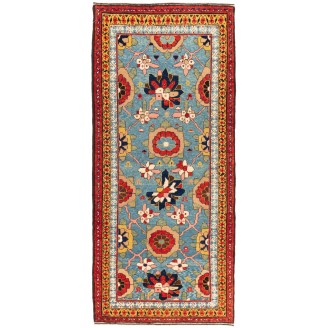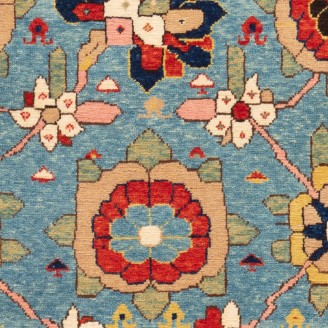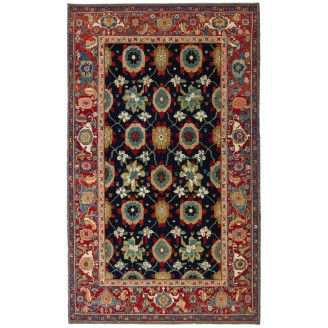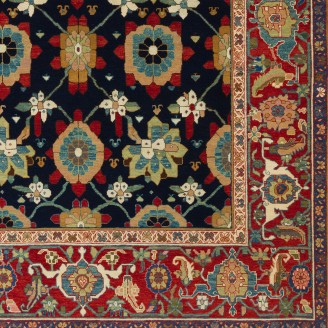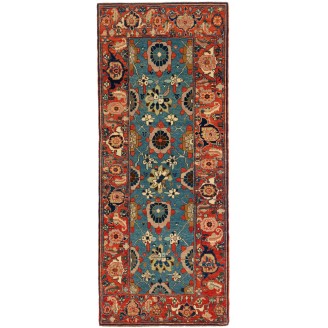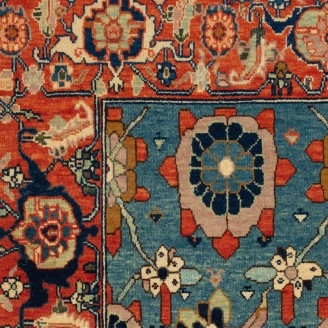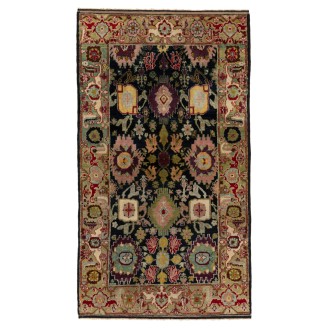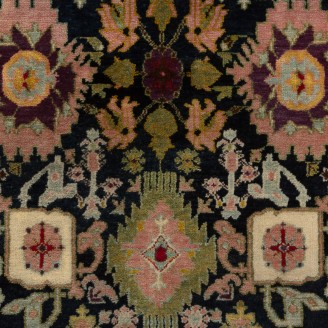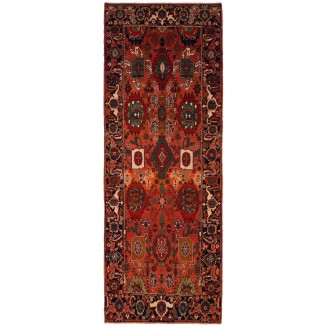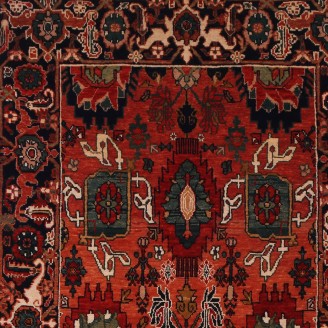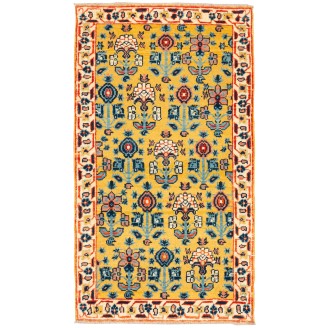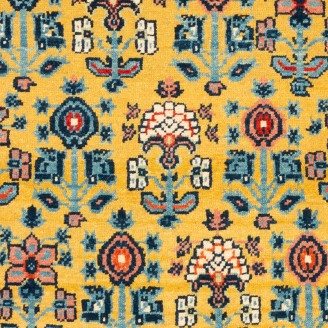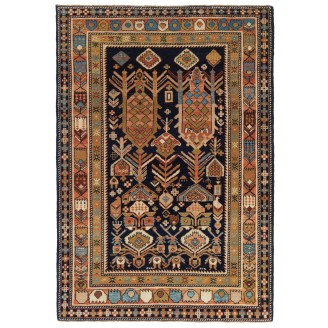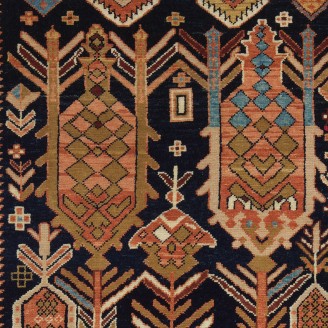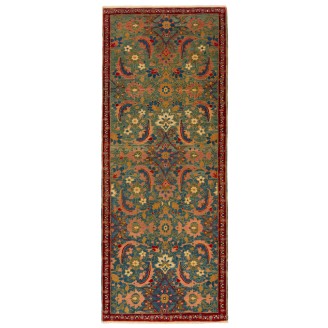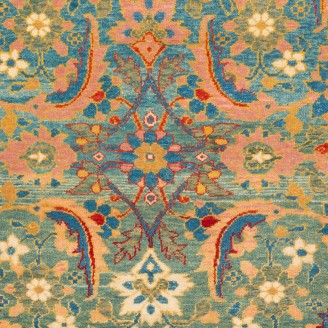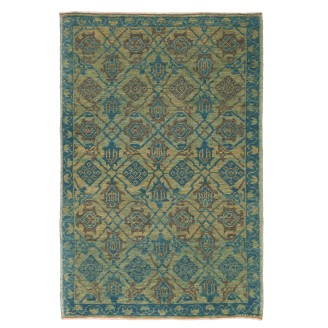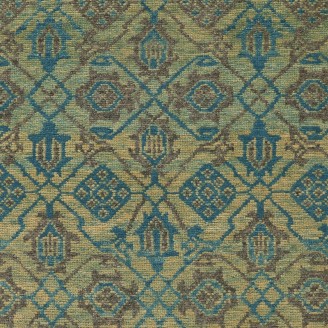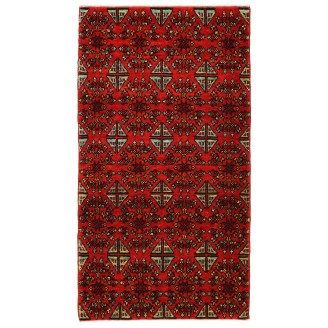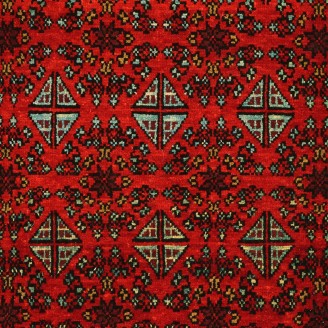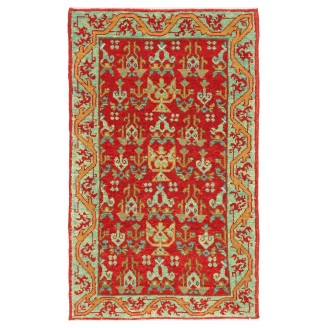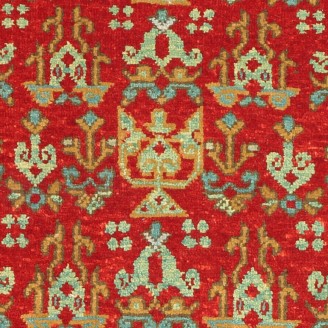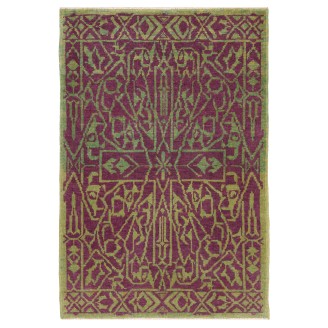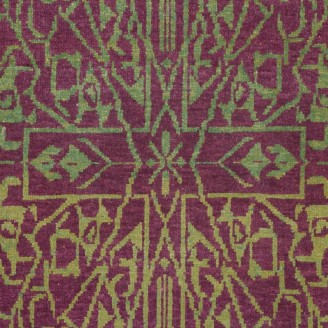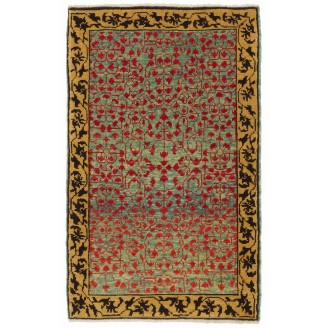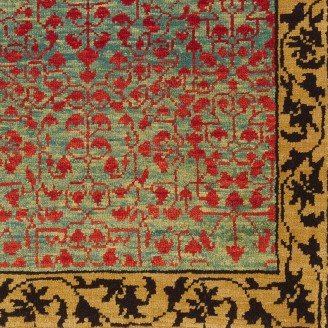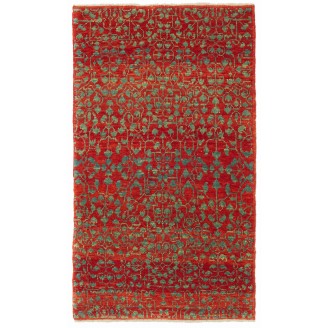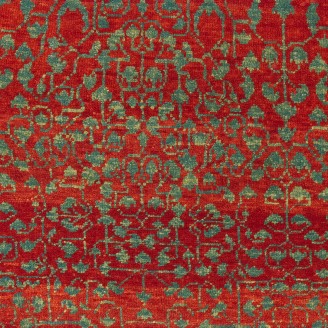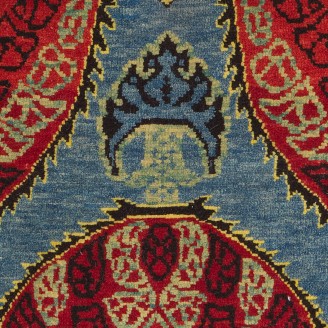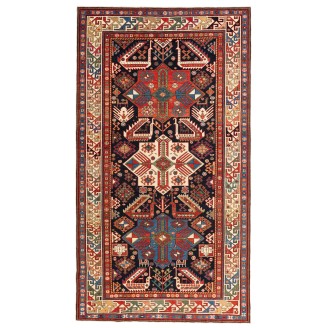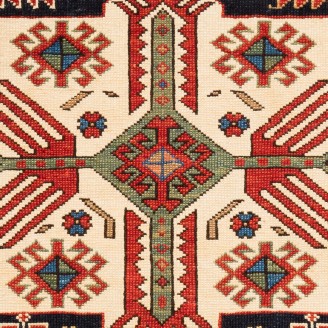Model: ART00134
Dimensions: 1'7" X 2'8"(50cm x 82cm)
The source of carpet comes from the book Völker, Angela, Die orientalischen Knüpfteppiche das MAK, Vienna: Böhlau, 2001: 42–5. That rug with the central star was designed in the early 16th-century rug by Mamluk Sultane of Cairo, Egypt. It is exhibited at MAK – Museum of Applied Arts, Vienna Austria...
Price:
$825
Ex Tax:$825
Model: ART00165
Dimensions: 1'8" X 2'5"(51cm x 75cm)
The source of carpet comes from the book Völker, Angela, Die orientalischen Knüpfteppiche das MAK, Vienna: Böhlau, 2001: 42–5. That rug with the central star was designed in the early 16th-century rug by Mamluk Sultane of Cairo, Egypt. It is exhibited at MAK – Museum of Applied Arts, Vienna Austria...
Price:
$825
Ex Tax:$825
Model: ART00116
Dimensions: 1'5" X 1'11"(44cm x 60cm)
The source of carpet comes from the book Völker, Angela, Die orientalischen Knüpfteppiche das MAK, Vienna: Böhlau, 2001: 42–5. That rug with the central star was designed in the early 16th-century rug by Mamluk Sultane of Cairo, Egypt. It is exhibited at MAK – Museum of Applied Arts, Vienna Austria...
Price:
$825
Ex Tax:$825
Model: ART00135
Dimensions: 1'8" X 2'9"(51cm x 85cm)
The source of carpet comes from the book Völker, Angela, Die orientalischen Knüpfteppiche das MAK, Vienna: Böhlau, 2001: 42–5. That rug with the central star was designed in the early 16th-century rug by Mamluk Sultane of Cairo, Egypt. It is exhibited at MAK – Museum of Applied Arts, Vienna Austria...
Price:
$825
Ex Tax:$825
Model: ART00117
Dimensions: 1'6" X 2'1"(47cm x 64cm)
The source of carpet comes from the book Völker, Angela, Die orientalischen Knüpfteppiche das MAK, Vienna: Böhlau, 2001: 42–5. That rug with the central star was designed in the early 16th-century rug by Mamluk Sultane of Cairo, Egypt. It is exhibited at MAK – Museum of Applied Arts, Vienna Austria...
Price:
$825
Ex Tax:$825
Model: ART00327
Dimensions: 2'9" X 6'3"(85cm x 191cm)
The source of the rug comes from the book Antique Rugs of Kurdistan A Historical Legacy of Woven Art, James D. Burns, 2002 nr.4. This was an exclusive example of a Mina Khani lattice design mid-19th century rug from Koliya'i, Southern Kurdistan area. The mina khani is composed of a series of rows of..
Price:
$2,900
Ex Tax:$2,900
Model: ART00510
Dimensions: 6'6" X 10'9"(199cm x 330cm)
The source of the rug comes from the book Antique Rugs of Kurdistan A Historical Legacy of Woven Art, James D. Burns, 2002 nr.4. This was an exclusive example of a Mina Khani lattice design mid-19th century rug from Koliya'i, Southern Kurdistan area. The mina khani is composed of a series of rows of..
Price:
$12,600
Ex Tax:$12,600
Model: ART00543
Dimensions: 2'9" X 6'8"(84cm x 205cm)
The source of the rug comes from the book Antique Rugs of Kurdistan A Historical Legacy of Woven Art, James D. Burns, 2002 nr.4. This was an exclusive example of a Mina Khani lattice design mid-19th century rug from Koliya'i, Southern Kurdistan area. The mina khani is composed of a series of rows of..
Price:
$3,200
Ex Tax:$3,200
Model: ART00423
Dimensions: 2'10" X 4'11"(87cm x 151cm)
This offset pattern is composed of palmettes and flowers, one has the impression that it is only part of a larger scheme designed 19th-century rug from Bidjar region, Eastern Kurdistan area. Very similar palmettes, drawn in a curvilinear manner and combined with identical forked leaves, can be seen ..
Price:
$2,300
Ex Tax:$2,300
Model: ART00381
Dimensions: 2'9" X 7'7"(84cm x 232cm)
This offset pattern is composed of palmettes and flowers, one has the impression that it is only part of a larger scheme designed 19th-century rug from the Bidjar region, Eastern Kurdistan area. Very similar palmettes, drawn in a curvilinear manner and combined with identical forked leaves, can be s..
Price:
$3,000
Ex Tax:$3,000
Model: ART00237
Dimensions: 1'8" X 3'0"(53cm x 93cm)
The source of the rug comes from the book Antique Rugs of Kurdistan A Historical Legacy of Woven Art, James D. Burns, 2002 nr.36 This was an exclusive example of offset rows of ascending flowers design rug c.1800s from Garrus, Eastern Kurdistan area. This type of rug has been called "Joshagan" in th..
Price:
$825
Ex Tax:$825
Model: ART00427
Dimensions: 4'2" X 6'0"(128cm x 183cm)
This is an unusual stylized version of the Caucasian shield-like palmettes design rug from the late 19th century, Shirvan region, Caucasus area. Shirvan is one of the principal weaving areas of the Caucasus, stretching from the central east coast some three or four hundred kilometers inland. Located..
Price:
$2,800
Ex Tax:$2,800
Model: ART00456
Dimensions: 2'7" X 6'6"(81cm x 200cm)
The source of the rug comes from the book Antique Rugs of Kurdistan A Historical Legacy of Woven Art, James D. Burns, 2002 nr.31. This blue background rug has a variation of masi awita (fish around the lotus) pattern from Senna, Eastern Kurdistan area late 19th century. The field design on this rug ..
Price:
$2,900
Ex Tax:$2,900
Model: ART00120
Dimensions: 1'9" X 2'7"(54cm x 80cm)
This lattice pattern is composed of palmettes and leaves filling the various compartments against the imposing ground. One has the impression that it is only part of a larger scheme designed 15th-century rug from the Mamluk era, Cairo region, Eygpt. These designs have often been described as wagireh..
Price:
$825
Ex Tax:$825
Model: ART00153
Dimensions: 1'7" X 3'0"(50cm x 92cm)
The source of carpet comes from the book Völker, Angela, Die Orientalischen Knüpfteppiche das MAK, Vienna: Böhlau, 2001: 42–5. The rug with the central star was designed in the early 16th-century rug by Mamluk Sultane of Cairo, Egypt. It is exhibited at MAK – Museum of Applied Arts, Vienna Austria. ..
Price:
$825
Ex Tax:$825
Model: ART00171
Dimensions: 1'8" X 2'9"(52cm x 85cm)
The source of the rug comes from the possession of Endre Unger, which was sold at Sotheby’s in 1992. That rug with the central star was designed in the early 16th-century rug by Mamluk Sultane of Cairo, Egypt. The interpreted design is composed of candelabra Elems and motifs rows filling the various..
Price:
$825
Ex Tax:$825
Model: ART00128
Dimensions: 1'11" X 2'9"(59cm x 85cm)
This geometric lattice pattern rug has the impression that it is only part of a larger scheme designed 15th-century rug from the Mamluk era, Cairo region, Eygpt. These designs have often been described as wagirehs or samplers and were said to have been used as weaver`s aids, or for demonstration pur..
Price:
$825
Ex Tax:$825
Model: ART00115
Dimensions: 1'10" X 2'11"(57cm x 89cm)
The source of carpet comes from the book Völker, Angela, Die orientalischen Knüpfteppiche das MAK, Vienna: Böhlau, 2001: 42–5. That rug with the central star was designed in the early 16th-century rug by Mamluk Sultane of Cairo, Egypt. It is exhibited at MAK – Museum of Applied Arts, Vienna Austria...
Price:
$825
Ex Tax:$825
Model: ART00112
Dimensions: 1'10" X 3'1"(56cm x 96cm)
The source of carpet comes from the book Völker, Angela, Die orientalischen Knüpfteppiche das MAK, Vienna: Böhlau, 2001: 42–5. That rug with the central star was designed in the early 16th-century rug by Mamluk Sultane of Cairo, Egypt. It is exhibited at MAK – Museum of Applied Arts, Vienna Austria...
Price:
$825
Ex Tax:$825
Model: ART00127
Dimensions: 1'10" X 2'7"(58cm x 80cm)
The most dramatic of the Gerous ( Garrus, Gerus, Garus ) carpets are those with an "asymmetric" design. Only a section of the original is shown, in the same way, many Lotto carpets were woven. It is difficult to guess the size of these carpets from a photo, but here we enter the area of the "Wagireh..
Price:
$825
Ex Tax:$825
Model: ARTK0023
Dimensions: 4'0" X 7'2"(123cm x 220cm)
The source of the rug comes from the book Oriental Rugs Volume 1 Caucasian, Ian Bennett, Oriental Textile Press, Aberdeen 1993, pg.176 and Tapis du Caucase - Rugs of the Caucasus, Ian Bennett & Aziz Bassoul, The Nicholas Sursock Museum, Beirut, Lebanon 2003, nr.43. This rug is from the late 19th cen..
Price:
$0
Ex Tax:$0
